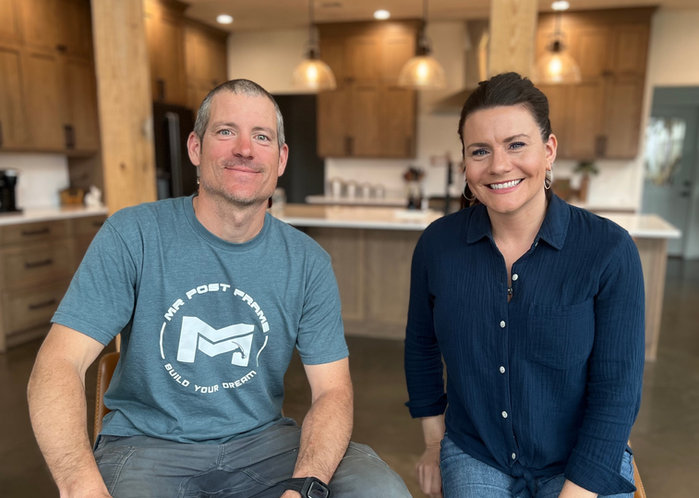30 x 40 Post Frame Garage | Framing
- MR Post Frame
- Oct 27, 2023
- 3 min read
Updated: Dec 19, 2023
This is part two of the 30 by 40 three-car post frame garage. In the last post we talked about pouring the footings. We've got all our columns laid out, and we're using laminated columns. This garage will have a nine-foot ceiling height, and the first thing I've already done is to find which footing is the highest. You might be asking, "Didn't you set them all to grade?" Yes, but when you pour the concrete, there can be some fluctuations, so it's not guaranteed that they are all perfect. You can make adjustments in your posts later.

What I like to do is find the highest one and make that my zero. This way, when I lay out my posts, the columns that are lower, I have to add that dimension to the bottom of my post to bring it up. My grade board will clear all these footings. If I picked the lowest one, my grade board wouldn't sit right on the footings, and I might end up hitting some of them. So, I found the highest one, which was a couple of these over here that were the same, and I marked that as zero.
Once I figured that this was the highest one, I set my receiver to zero on this one. Then I went around to figure out the others. For example, if we have a four-inch slab, that's going to be my bottom grade. But if this needs to be brought up 5/8 of an inch, I have to measure up 4 and 5/8 and make a line. This line is where my concrete will be. What's nice about doing it this way is that all my bottom grade boards will match up with this line. It might sound confusing, so we're going to mark out the one that's zeroed and then create a storyboard or a template from a 2x4. We'll transfer these marks around, and I'll explain it further as we go. I marked the measurements on the 2x4, and one needed to come up 1/8 inch. To do that, I make a mark at 1/8, strike my line, and then butt the bottom of the 2x4 up with that line and transfer my marks. Now, I'll remove that and mark all my lines.
Moving on, we removed the center 2x6s on those columns and notched them so our trusses can fit in. We fasten them with some 30D ring shank nails. This is also how all the girts will get attached to the columns.

Then we start framing up the wall. We notched it where the trusses will sit using the storyboard. We marked all the girt locations. The first thing we need to do is align our end string line, which marks the end of the building. We checked for squareness, measuring 98 and 3/8 inches, and confirm that it's square.
Once we're sure it's square, we proceed to add measurements every 16 and 1/4 inches to match up with the trusses' locations. This ensures that the wall is framed accurately. We continue building the wall with staggered joints to make sure it's robust.
We also explained how double headers were installed over the garage doors. On one side, all the trusses sit inside the column, while on the other side, they land on the headers. We made stub columns to fit between the double headers.
When preparing to put up the trusses, we make sure they've been measured and adjusted to ensure they're perfectly aligned with the building's width. The trusses have a one-foot overhang on each side, which is achieved by marking and pre-drilling the trusses to make the installation easier. The overhang jacks have also been prepared and are being installed to provide the desired one-foot overhang.

We explained how to make purlin layout marks every 8 inches down from the top of the trusses. These purlins will be used to support the roof structure. Now, we're moving on to installing the end wall, which was laid out to simplify the installation process. Lastly, we prepared and installed the overhang jacks on the trusses and finished installing purlins for the roof.
Thank you,
MR Post Frame
Patreon Group:
Interested in tackling your build on your own? If you want to explore the possibility of being your GC or self-building, our Patreon membership is for you! It's a community of like-minded people offering support, discounts, Q/A, and more.

